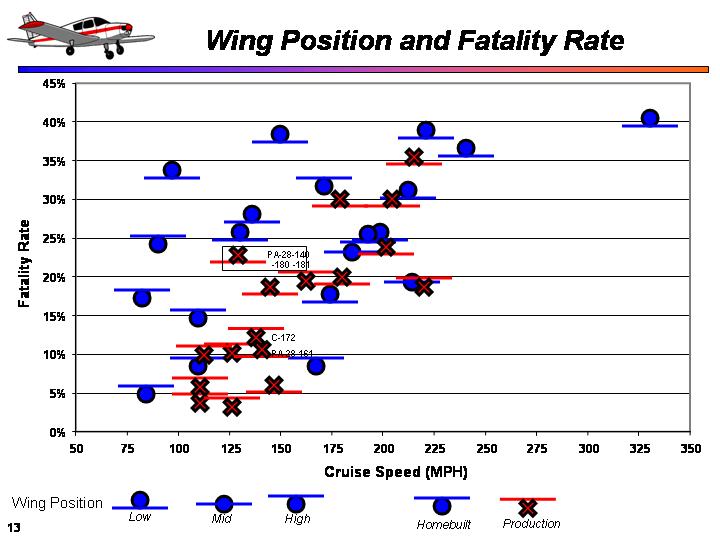I'm doing one of my periodic deep analyses of homebuilt accident statistics. One aspect is comparing the fatality rate for specific homebuilt aircraft against their configurations and cruise speeds. This is an example of the type of graphic I'm looking to update:
Configuration is easy, but cruise speed is arguable. Below is my initial input to the analysis. I got them through a simple Google search. But I'm sure some folks here know better, and am interested in some feedback.
I realize this is awkward, in that some types of airplanes (such as the Kitfox) have a range of models with a commensurate range of cruise speeds. But I don't need absolute accuracy...plus or minus 10-20 MPH is just going to shift a point on a plot slightly left or right.
I figure it should be a popular topic. You get to argue about your favorite planes, plus you get to call me an idiot for some of my values. :-)
Aircraft Avid Flyer Bowers Fly Baby Bushby Midget Mustang 2 Cozy Glasair Glastar Harmon Rocket Kitfox Lancair IV Pietenpol Air Camper Rand KR-2 Rans S-12 Rans S-6 Rans S-7 Rutan Long-EZ Rutan Varieze Searey Sonex Thorp T-18 Vans RV-10 Vans RV-3 Vans RV-4 Vans RV-6 Vans RV-7 Vans RV-8 Vans RV-9 Velocity Zenair CH-601 Zenair CH-701
Ron Wanttaja





 Reply With Quote
Reply With Quote



